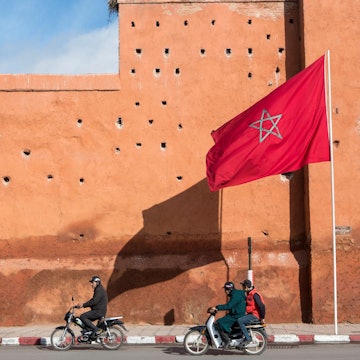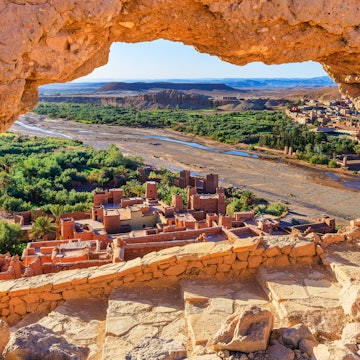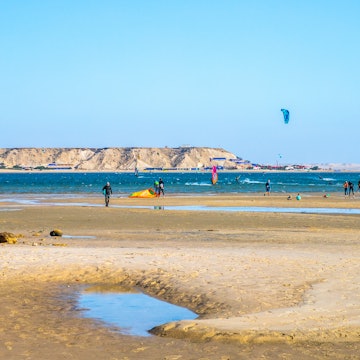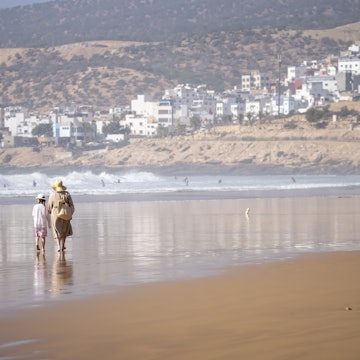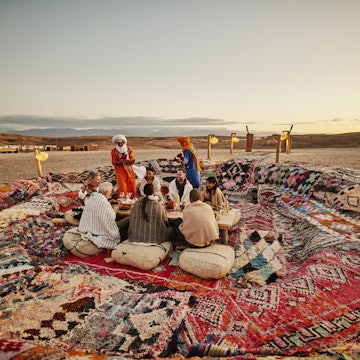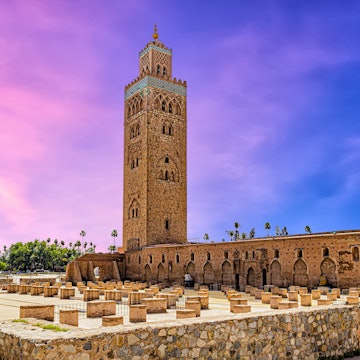
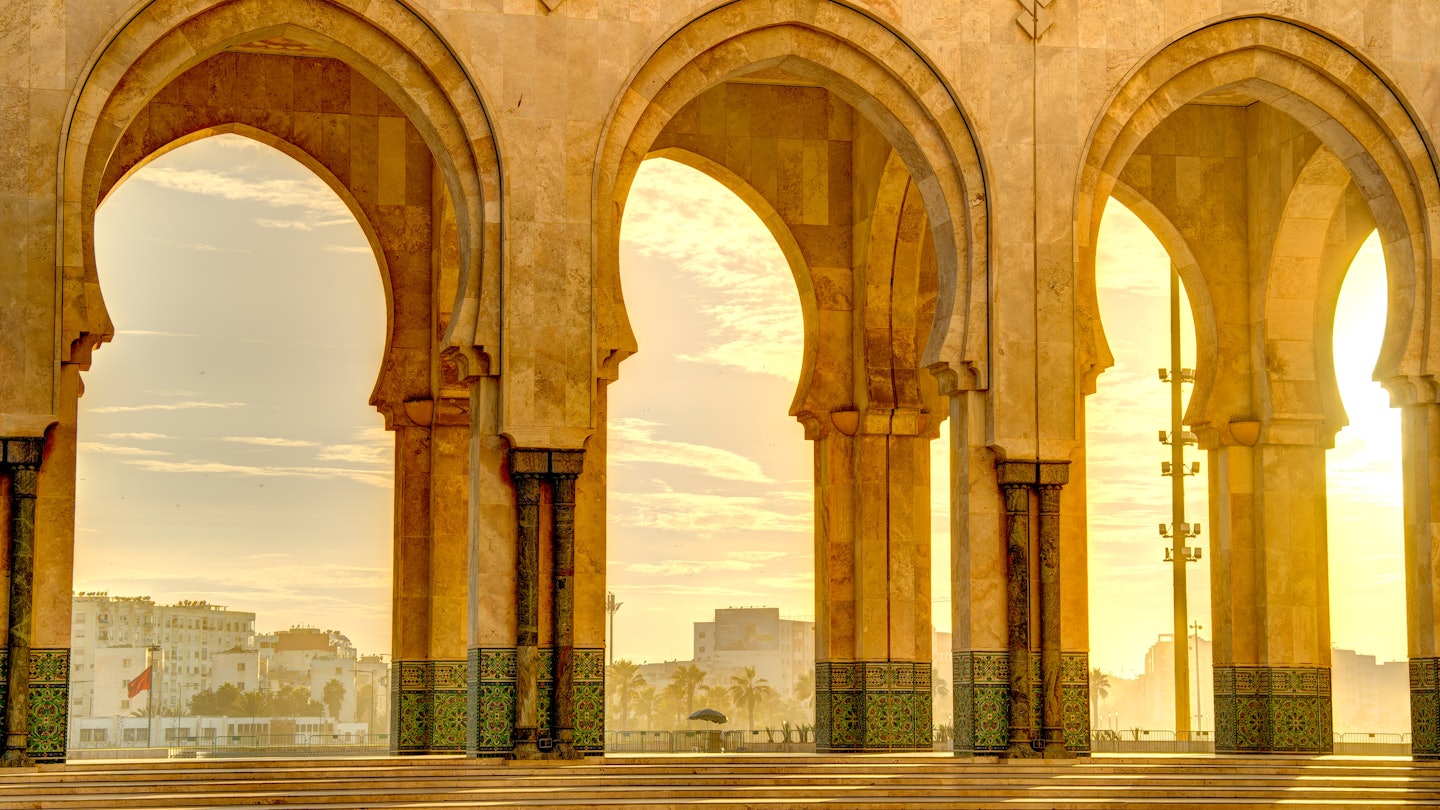
A courtyard at Hassan II Mosque. mehdi33300/Shutterstock
Casablanca, or Casa as locals call it, is Morocco’s economic and business capital. Everyone in this espresso-fueled population of nearly 4 million, a whopping 25% of whom are under 15 years old, seems to have read the same memo: work hard, play hard and don’t stop moving.
While Casa may not have the same volume of historic sites as Morocco’s imperial cities, those it has are truly special. The magnificent Hassan II Mosque is the only mosque in Morocco where non-Muslims can visit the interior, and exploring the Quartier Habous feels more like a discovery than ticking off a list of well-trodden to-dos in a tourist-centric city. That said, if you like tourist-centric to-dos, one to consider is Rick's Café, a reconstruction based on the 1942 movie Casablanca. Visit for a predinner cocktail at the bar.
The city is undergoing ambitious upgrades in preparation for the 2030 FIFA World Cup, including improvements to public transportation, expansion of the airport and the creation of pedestrianized zones. There’s a buzz as the entrepreneurial population capitalizes on this growth, with new accommodations, restaurants and cultural offerings for the expected influx of visitors.
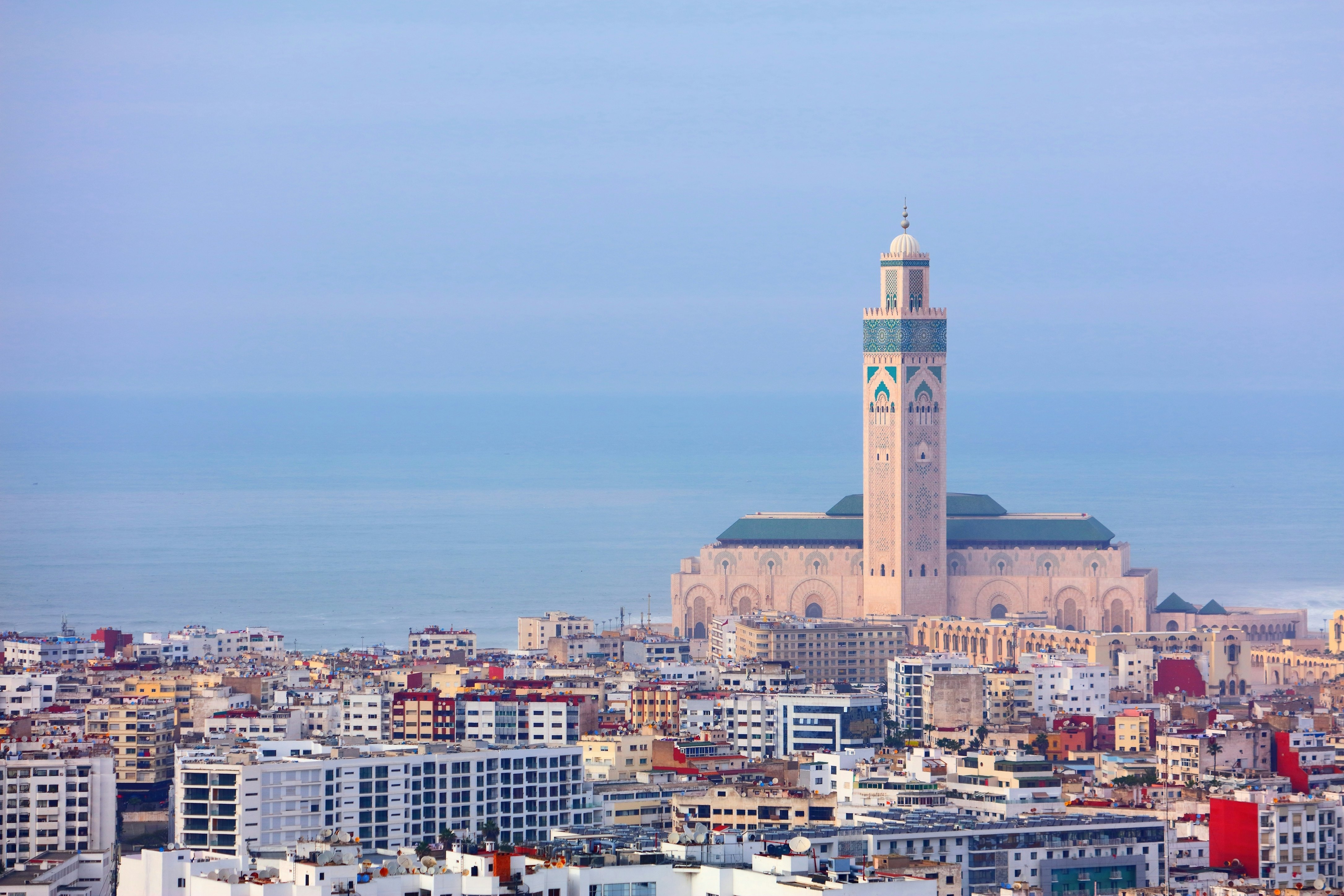
When should I go to Casablanca?
Casablanca is a year-round destination. The balmy Mediterranean climate and cooling Atlantic breeze mean it’s never too cold or hot. The coldest months are from December to February, with daytime lows around 13°C (55°F). August is peak summer, with an average air and ocean temperature of 23°C (73°F).
Most international visitors traveling to Casablanca as part of a Morocco circuit itinerary come in the spring (March to June) and autumn (September to November) – these are the best times to go to the Sahara and inland regions. The quieter offseason typically coincides with the cooler months.
From June to August, the city hosts outdoor events such as Jazzablanca, an international music festival at several venues over nine days.
How much time should I spend in Casablanca?
Casablanca is the arrival airport for most long-haul flights to Morocco; many travelers use the city as a launchpad to explore the rest of the country.
Most of Casablanca’s highlights can be experienced during a two-night stay. If you are pressed for time, a packed one-night stay could accomodate a whistle-stop guided tour that includes Hassan II Mosque, the Quartier Habous and a drive or walk along the Corniche.
Casablanca can also serve as a base for an extended stay, allowing you to make easy day trips to Rabat, Morocco’s capital, just over an hour away by train or road, and the peaceful lagoon village of Oualidia, a nature lover’s paradise two hours south of the city, stopping off en route at El Jadida, home to an impressive fortress.
Is it easy to get in and around Casablanca?
The easiest way to travel the 30k (18 miles) from Mohammed V Airport to the city is by train. Trains depart hourly from within the airport terminal building. Buy ONCF tickets online in advance or from the ticket office at the station. The journey time is 35 to 45 minutes, depending on your final stop. The city’s three main train stations – Casa Oasis, Casa Voyageurs and Casa Port – are all on the same line.
The airport taxi fare is between 300 and 400 Moroccan dirham (Dh300 to Dh400, roughly US$33 to US$44), depending on your destination and the day and time; traffic is heaviest during rush hour (7am to 9am and 5pm to 7pm).
The modern CasaBusway and CasaTramway routes run frequently, connecting significant areas. A single ticket is Dh5 to Dh8 (US$0.50 to US$0.90) and even cheaper if you buy a rechargeable card for Dh15 (US$1.75) and top up online. Download the app to plan bus and tram travel.
For short city center journeys, hail a licensed red petit taxi, which is a shared taxi that carries up to three passengers, or use a ridesharing service like Careem.
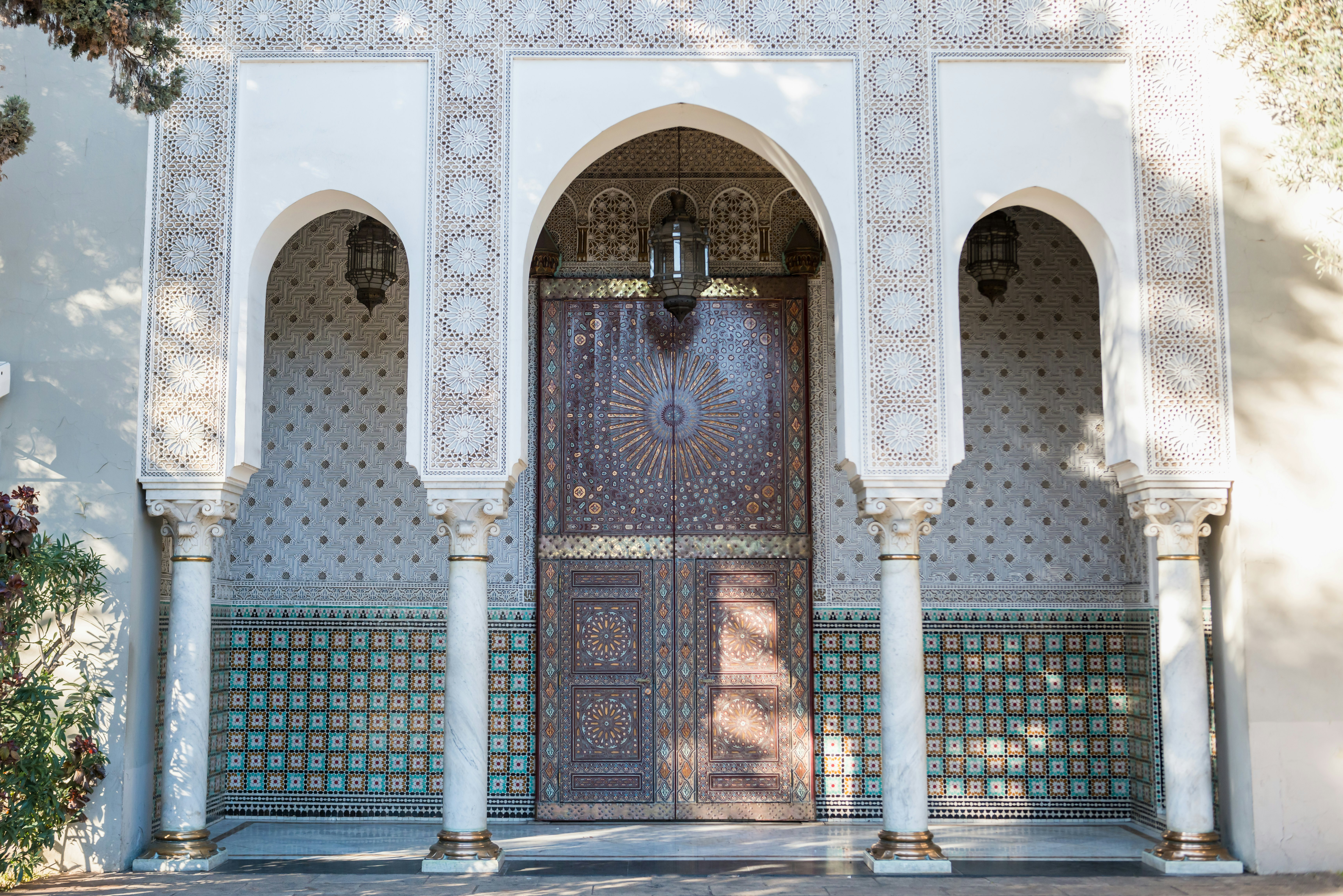
Top things to do in Casablanca
Wander the alleys of the Quartier Habous
A stroll around this charming neighborhood will take you back to Casablanca in the 1930s. Close to the Royal Palace, it’s a quaint and well-preserved community of narrow streets, archways and souq stalls that sell various items, including shiny brassware, books, rugs and artwork. The Mahakama du Pacha is best visited with a guide who can guarantee entrance and bring its intricate Islamic architecture details to life. While in the area, stop by Pâtisserie Bennis to pick up traditional Moroccan sweets or savory snacks such as pastilla (a meat-filled pastry). Nearby, join locals for tea at the Café Imperial tables that spill out onto the street.
Glimpse heaven at Hassan II Mosque
The third-largest mosque in the world, Hassan II Mosque has a notable presence on Casablanca’s skyline. Up close, it is a masterpiece of marble, hand-carved cedarwood and intricate zellige (colorful geometric mosaic tilework). Guided tours, lasting roughly 45 minutes, are offered around prayer times. To visit inside, you will be asked to remove your shoes, and bags will be provided to carry them. You are also required to wear clothing that covers your shoulders, torso and knees. Visit on a fair-weather Friday to experience the mosque's Gate of Heaven, a retractable roof that opens to the sky. Underneath the mosque is a hammam measuring 6000 sq meters (64,583 sq ft). Once reserved for royalty, it’s now open to the public, with separate areas for men and women. Book a slot in advance.
Traverse culinary crossroads
Casablanca’s food scene is fast evolving and worth discovering. The city’s ocean location means fish and seafood are fresh and prominent on most menus, and can be enjoyed at all budgets – from plastic tables at the Marché Centrale (the city’s fish market), with an ocean view at Le Cabestan or in the elegant sushi bar Iloli, a popular Japanese restaurant.
Contemporary fine dining is a new trend in Casablanca, such as Table 3, where Moroccan chef Faycal Bettioui crafts culinary journeys through tasting menus.
For authentic Moroccan cuisine, head to Dar Dada or Dar el Kaid for flavorsome dishes such as couscous and rfissa (stewed chicken, lentils, and onions with flatbread or pastry) served in an ornately decorated dar (traditional house).
Learn about Casablanca’s history at its museum villas
The Casablanca Memory Museum showcases the city’s urban and social history through rotating exhibitions in a beautifully renovated villa. The fascinating Museum of Moroccan Judaism walks visitors through the history of Jews in Morocco; it’s the only Jewish museum in the Arab region. Villa des Arts de Casablanca, a stunning art deco villa with pretty gardens, is filled with contemporary art and regularly hosts cultural events.
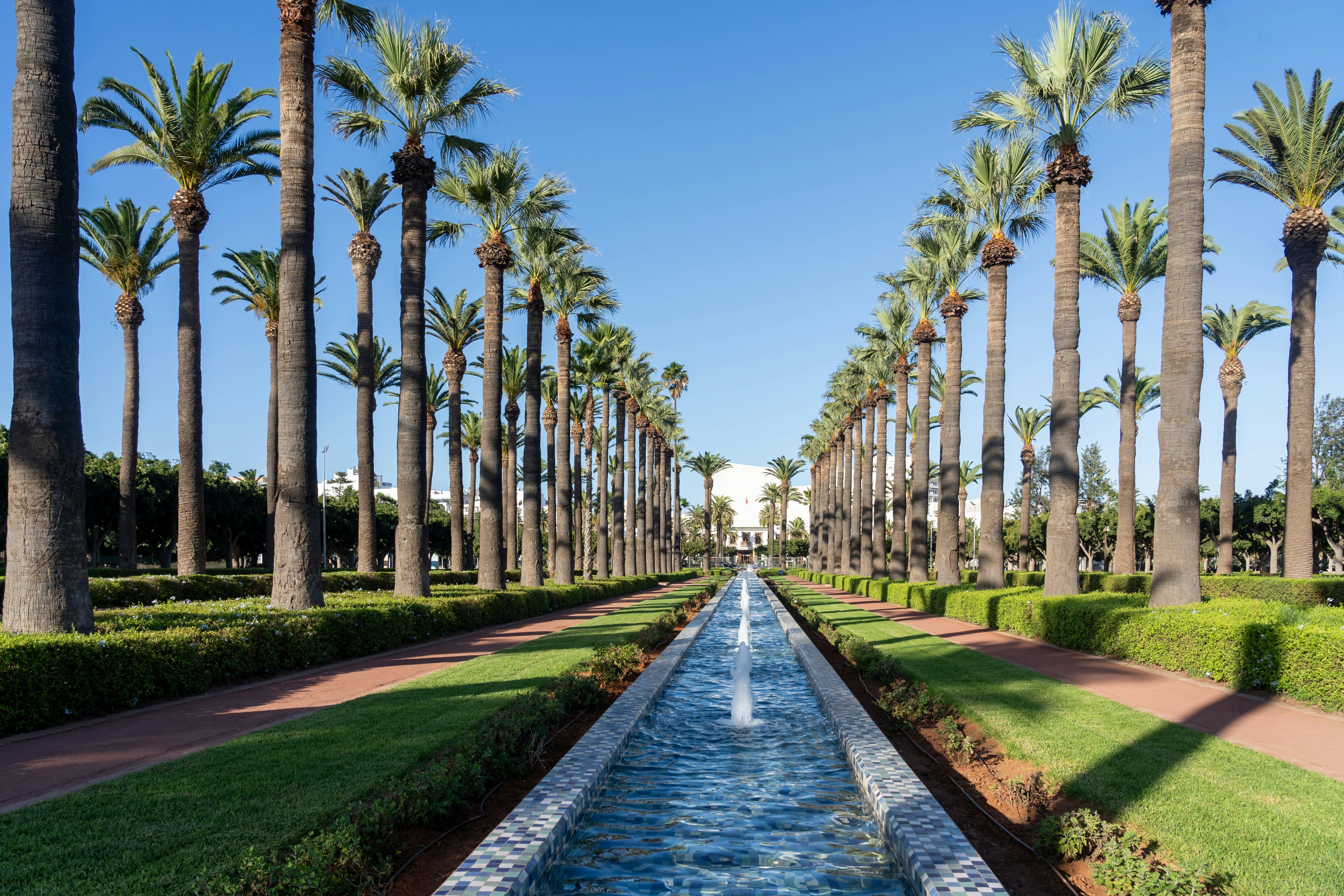
My favorite thing to do in Casablanca
I love exploring Casablanca on foot, hopping on the tram for longer stints. Walking is easy, especially in pedestrianized areas like United Nations Square and Parc de la Ligue Arabe. I’ll finish the day with a sunset stroll along the Corniche to take in the pink hues of Hassan II Mosque as the sun drops into the ocean. There are many great places to eat. I love Le Doge if meeting friends for tapas and a drink on the rooftop; for a treat, its fine dining establishment, Le Jasmine, is exquisite.
How much money do I need for Casablanca?
Most of Casablanca's hostels and budget hotels are near the port. If you can splurge, several luxury hotels are in the central Sidi Belyout district and at Ain Diab for a beach location.
Moroccans rarely spend a lot to eat Moroccan cuisine, so look for low-key restaurants busy with locals. You’ll likely be pleasantly surprised by the food and the prices.
Cash is still widely used for tips, petits taxis and street stalls, and many establishments prefer cash. Card payments are accepted for larger purchases, especially by international chains.
Night at a central three-star hotel: from Dh600 (US$67)
Single tram or bus journey: Dh5 to Dh8 (US$0.50 to US$0.90)
One-way 2nd-class train ticket between the airport and city: Dh60 (US$6.50)
1.5L (50oz) bottle of water: from Dh7 (US$0.75)
Cappuccino: Dh30 (US$3.30)
33cl (11 oz) bottle of local beer: Dh65 (US$7.25)
Gin cocktail at Rick’s Café: Dh100 (US$11)
Chicken tagine at a licensed restaurant: Dh160 (US$17.75)
One adult ticket to a Wydad AC or Raja match: from Dh50 (US$5.50)
Day pass to Jazzablanca: from Dh700 (US$78)
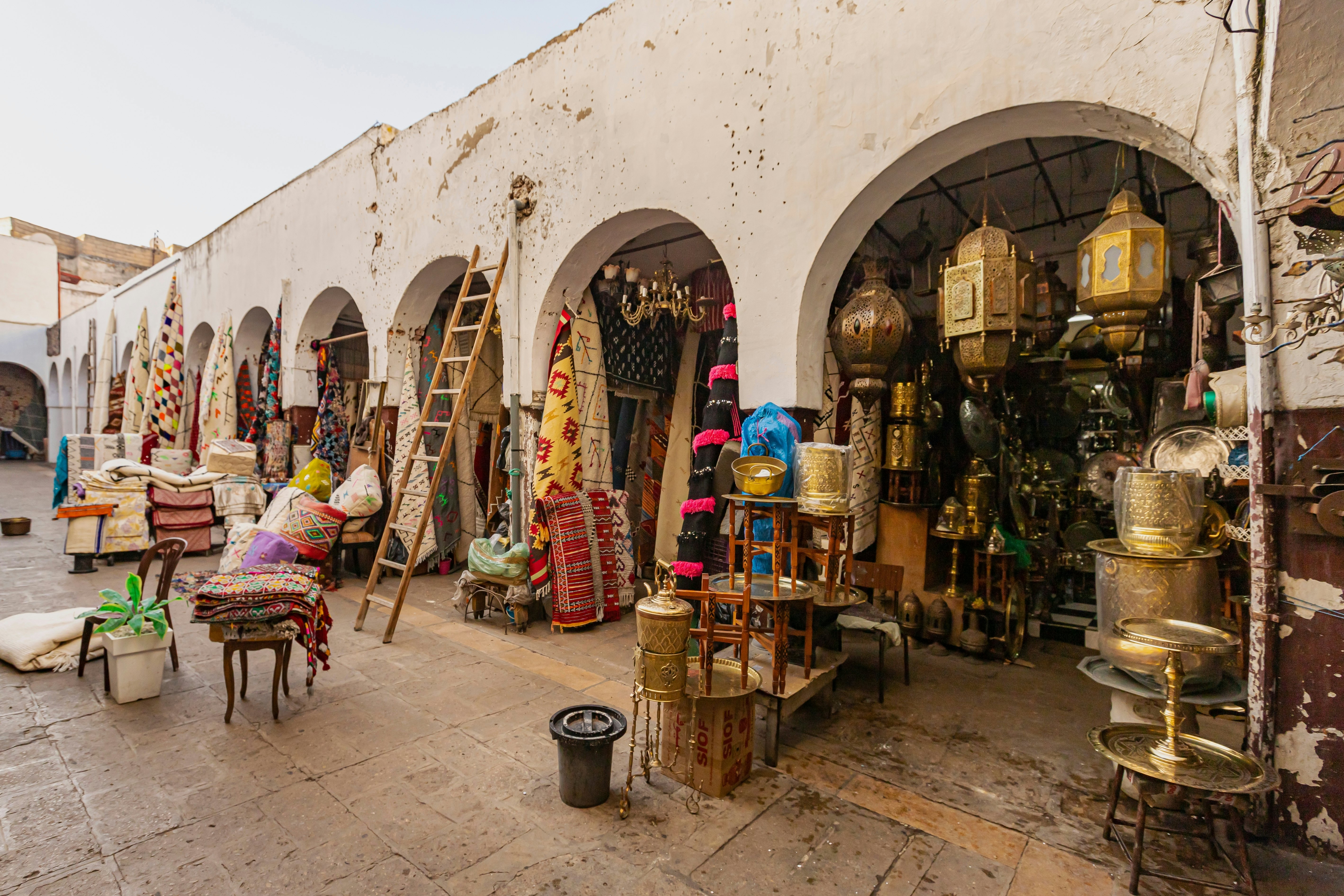
Is Casablanca good for shopping?
Casablanca is great for shopping. The Old Medina and Quartier Habous are for traditional souks and practicing your bartering skills. If you prefer conventional fixed-price shopping, head to the Maarif district or Morocco Mall, the biggest shopping center in Africa.
Is Casablanca safe?
Casablanca has a low crime rate and is a safe and welcoming city for travelers. That said, dressing modestly and keeping valuables out of sight can help avoid unwanted attention and petty crime. Avoid unlicensed taxis.
What languages are spoken in Casablanca?
Darija (Moroccan Arabic) is the primary language spoken. French is widely spoken and used in business and administration, and English is commonly spoken in the tourism sector. Learning a few key phrases in Moroccan Arabic can help build a connection with locals.
Can I go to the beach in Casablanca?
Ain Diab is the city’s most popular sandy beach. Bordered by cafes and restaurants, it gets lively at sunset and on weekends. The beach clubs in the upmarket suburb of Dar Bouazza rent loungers, and Mohammedia’s calmer waters are popular with families.










